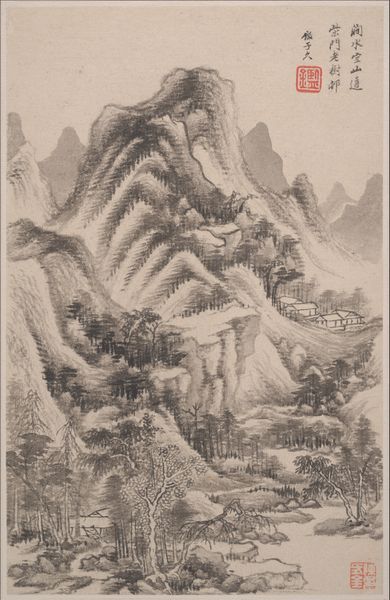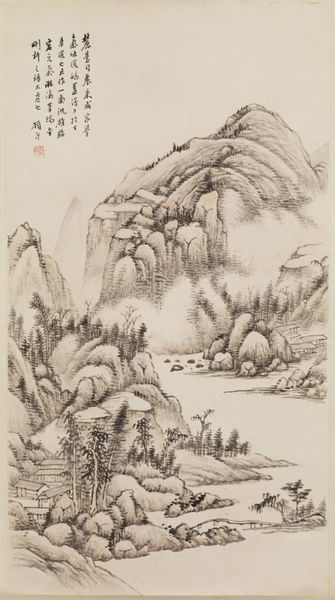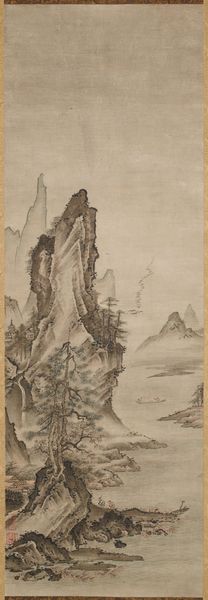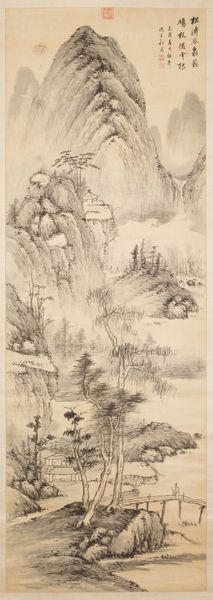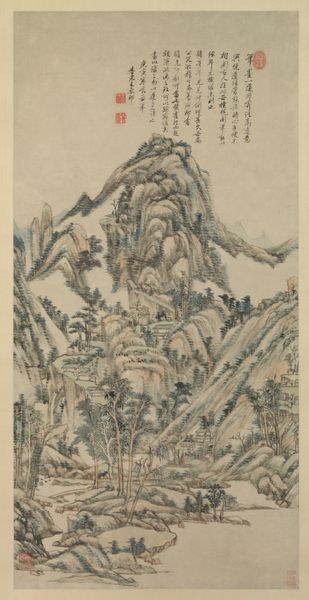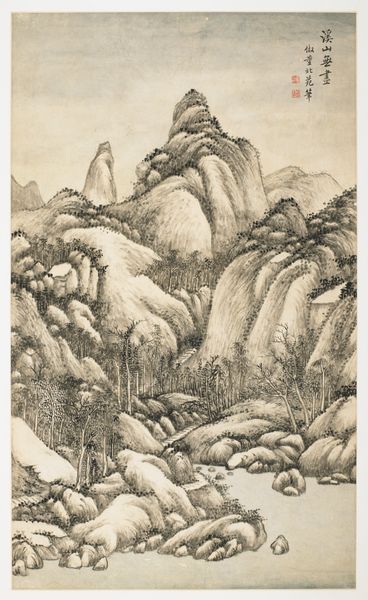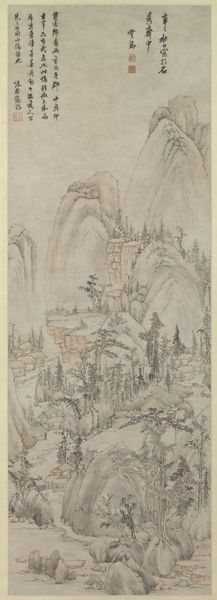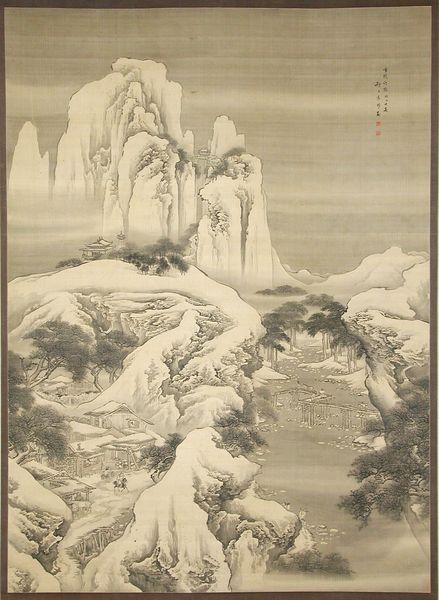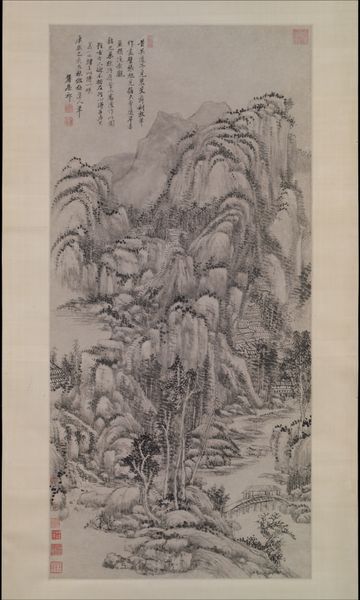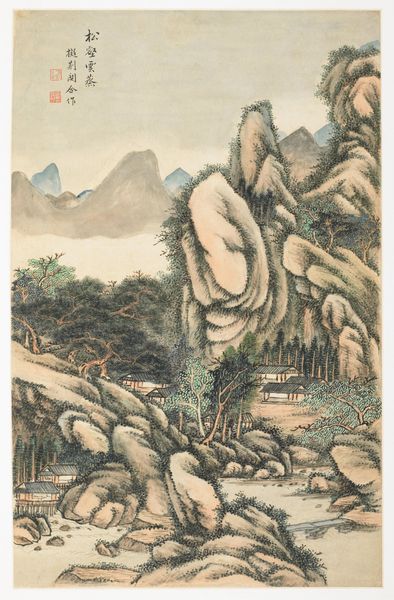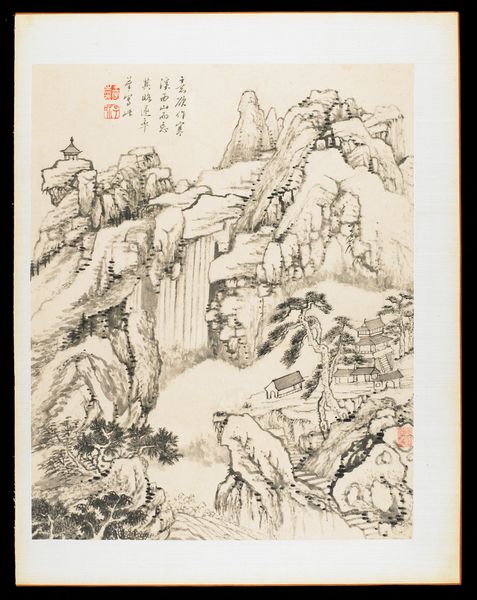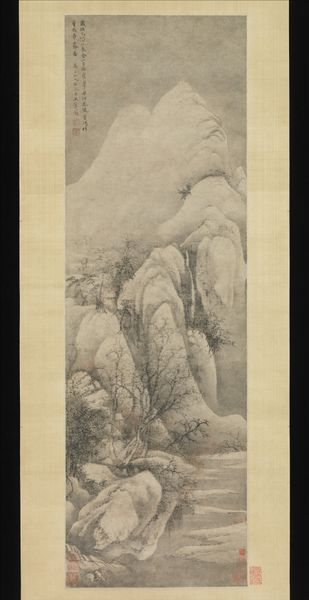
Scholarly Retreat Beneath Rocks and Cataracts c. 19th century
0:00
0:00
ink-on-paper, hanging-scroll
#
amateur sketch
#
toned paper
#
light pencil work
#
ink painting
#
pencil sketch
#
incomplete sketchy
#
japan
#
ink-on-paper
#
hanging-scroll
#
ink drawing experimentation
#
pen-ink sketch
#
watercolour illustration
#
watercolor
#
calligraphy
Dimensions: 52 3/16 x 17 3/4 in. (132.56 x 45.09 cm) (image)
Copyright: Public Domain
Editor: This is *Scholarly Retreat Beneath Rocks and Cataracts* from around the 19th century, by Rai San'yō. It's an ink-on-paper hanging scroll. The monochrome and dramatic scenery makes it seem both imposing and intimate at the same time. What is your interpretation of this work? Curator: This piece reflects a key aspect of literati culture in 19th-century Japan. The ‘scholarly retreat’ was both a physical and an intellectual space. These landscapes idealized escape from the demands of public life, inviting contemplation of nature. What impact do you think political and social turbulence of the late Edo period might have had on its popularity? Editor: I imagine it created even more desire to escape those pressures. Is it about rebelling or seeking inner peace, or both? Curator: It's complex. These images weren't necessarily calls to revolution, but they do reflect a tension. Think of the role of calligraphy here; is it purely decorative, or does the act of inscription contribute to the construction of this scholarly identity, differentiating it from the establishment? Editor: It seems both. The writing enhances the artistic merit, and suggests it belongs to an intellectual world separate from the physical world that’s being depicted. What would have happened to such paintings after they left the artist's studio? Curator: Often they circulated amongst networks of fellow scholars and artists, reinforcing these shared values. Display contexts mattered greatly, too: would it be displayed in a private study, or at a more public gathering, shaping its reception? Editor: So, the image carries layers of meaning, influenced by politics, social circles, and even display settings. It seems art history is about investigating this and much more. Curator: Exactly, it’s a multi-faceted reflection on society and art’s function within it. And on how we interact with those things too!
Comments
minneapolisinstituteofart almost 2 years ago
⋮
Rai San'yo was the headmaster of a Confucian academy in Kyoto in the early nineteenth century. In true literati fashion, he began painting purely for personal enjoyment. While he came into contact with many paintings from China, he developed a distinctive style of his own characterized by a bold use of the brush within rather orthodox compositions. In the inscription on this painting, San'yo clearly identifies himself with the literati tradition:In painting there is a difference between those of high spirit and those who seek to impress. If painting becomes fine and delicate, it will be narrow and limited. My ink-play should not be laborious. Should it ever become so, I will throw it away.
Join the conversation
Join millions of artists and users on Artera today and experience the ultimate creative platform.
